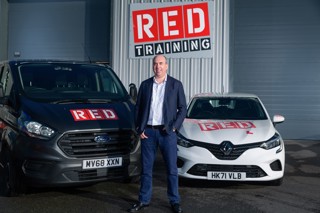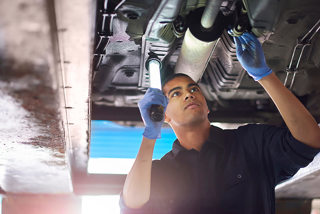The overwhelming majority (85%) of fleet decision-makers are facing increased pressure from board level execs to make spending cuts, new research suggests.
More than a quarter (27%) expect their businesses to contract this year, with just over half (55%) anticipating growth. This contrasts with a more bullish view from the recent Arval Mobility Observatory research, where just 5% expected their vehicle numbers to contract, but is in tune with the downbeat forecasts on costs where almost 60% expected them to rise across a range of metrics.
The latest study from Bridgestone and Webfleet reveals that fuel is the biggest target for cost savings, cited by a third (33%) of fleets, with more than two-thirds planning to introduce new fleet fuel strategies. This is closely followed by vehicle financing (29%), and drivers’ wages and overtime (28%).
“As economic headwinds intensify endangering the competitiveness of UK plc, shrewd cost control strategies are called for to help protect profit margins,” said Beverley Wise, Webfleet regional director for Bridgestone Mobility Solutions.
“But with resources at breaking point for many businesses, innovative solutions must be found that achieves this without jeopardising productivity and service standards.
“Fleet operators are no strangers to ingenuity and digital solutions, such as advanced telematics platforms, that can unleash efficiency improvements through fleet management insights are taking centre stage.”
Fuel is the biggest target for cost savings, cited by a third (33%) of fleets, with more than two-thirds planning to introduce new fleet fuel strategies. This is closely followed by vehicle financing (29%), and drivers’ wages and overtime (28%).
Elsewhere, four in five survey respondents said they plan to review opportunities to consolidate fleet services from suppliers.
“Significant total cost of ownership, sustainability and safety benefits, can be realised where supplier services are streamlined in a way that frees up resources and drives savings across the entire fleet operation,” said David Almazan, commercial business unit director, Bridgestone North Region
Fleets prioritise driver retention

A separate study from Samsara suggests that nine in 10 UK fleet managers (90%) are prioritising driver retention and recruitment this year, as driver shortages impact 42% of fleet-based businesses.
Its report - 2023: The Road Ahead - reveals the pressure that drivers are under.
Top of their concerns are issues such as the growing pressure to deliver on time (38%), increases in delivery volume (34%) and the need to meet more aggressive route schedules (33%).
In addition, only 33% of commercial drivers believe their role is valued by members of the public and just one in 10 (11%) say the UK Government respects their role.
Some 45% of commercial drivers said that they are ‘very likely’ or ‘quite likely’ to leave their current job during 2023. Two-thirds (65%) are also prepared to consider industrial action.
In response, 94% of fleets said that they are increasing their technology investment in 2023 to improve the driver experience and support driver safety.
It’s a move likely to be welcomed by commercial drivers, with eight in 10 (78%) agreeing that technology would positively impact their job, including dashcams (78%), GPS routing (77%), safety systems and alerts (75%), incident detection (75%), and mobile-based workflow tools (68%).
Philip van der Wilt, senior vice president and general manager EMEA at Samsara, said: “It was only a couple of years ago that drivers were hailed as heroes of the pandemic. They kept the UK moving when almost everything else ground to a halt during lockdown.
“Today, this survey reveals a workforce that is feeling somewhat neglected and under-served. They want to see change.
“Now is the time for fleet managers to prioritise their driver workforce, and the vast majority are focused on making the job a more attractive and rewarding profession to drive greater diversity and attract new people into the industry.”
He continued: “There needs to be a cultural change in the way professional drivers are perceived. Technology is not the only solution, but it can be an enabler of overcoming these complex problems, improving the driver experience, ensuring driver health and safety, and creating a modern way of working that meets the expectations of today’s workforce.”























Login to comment
Comments
No comments have been made yet.